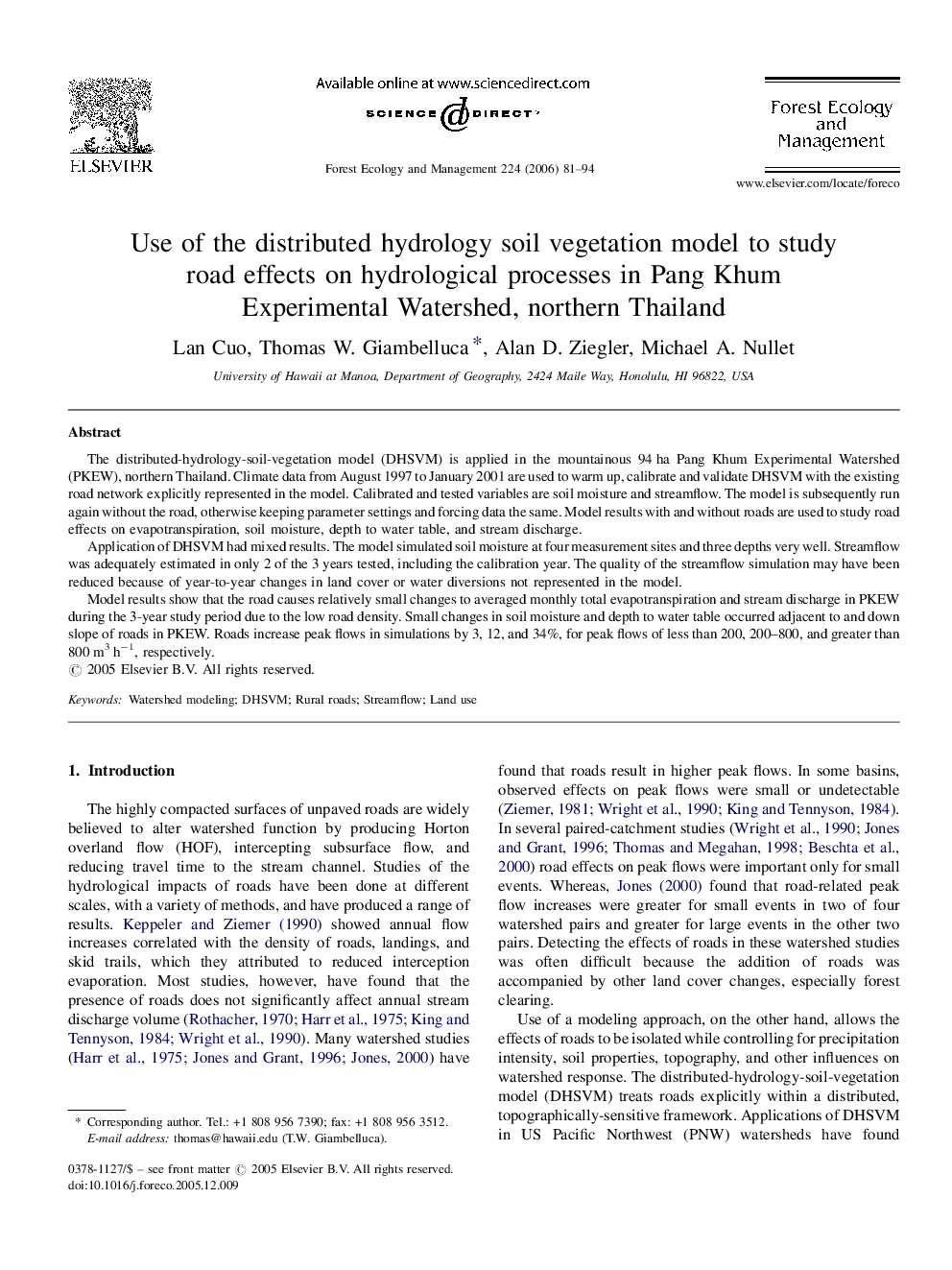| Article ID | Journal | Published Year | Pages | File Type |
|---|---|---|---|---|
| 91051 | Forest Ecology and Management | 2006 | 14 Pages |
The distributed-hydrology-soil-vegetation model (DHSVM) is applied in the mountainous 94 ha Pang Khum Experimental Watershed (PKEW), northern Thailand. Climate data from August 1997 to January 2001 are used to warm up, calibrate and validate DHSVM with the existing road network explicitly represented in the model. Calibrated and tested variables are soil moisture and streamflow. The model is subsequently run again without the road, otherwise keeping parameter settings and forcing data the same. Model results with and without roads are used to study road effects on evapotranspiration, soil moisture, depth to water table, and stream discharge.Application of DHSVM had mixed results. The model simulated soil moisture at four measurement sites and three depths very well. Streamflow was adequately estimated in only 2 of the 3 years tested, including the calibration year. The quality of the streamflow simulation may have been reduced because of year-to-year changes in land cover or water diversions not represented in the model.Model results show that the road causes relatively small changes to averaged monthly total evapotranspiration and stream discharge in PKEW during the 3-year study period due to the low road density. Small changes in soil moisture and depth to water table occurred adjacent to and down slope of roads in PKEW. Roads increase peak flows in simulations by 3, 12, and 34%, for peak flows of less than 200, 200–800, and greater than 800 m3 h−1, respectively.
